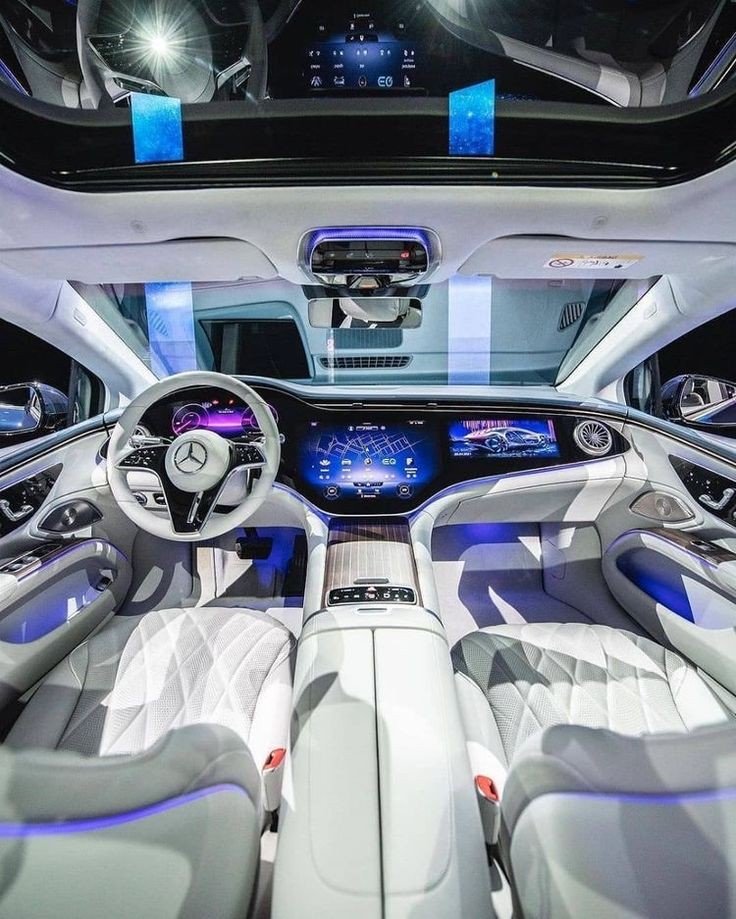
The Indian automobile market is witnessing a significant surge in demand for zero-emission commercial vehicles (e-CVs) as businesses and fleet operators increasingly shift towards sustainable transportation solutions. According to the latest retail sales data sourced from Vahan, a total of 680 e-CVs were sold in August 2024, marking a 31% year-on-year increase from August 2023’s 521 units. However, this figure represents a 16% decline compared to July 2024, when 813 units were sold.
Despite the slight dip in monthly sales, the cumulative sales data for 2024 paints a much brighter picture for the domestic e-CV industry. Between January and August 2024, a total of 7,071 e-CVs have been sold, representing an impressive 162% year-on-year growth compared to 2,694 units sold in the same period in 2023. The average monthly sales of e-CVs now stand at 883 units, a substantial increase from the 336 units reported a year ago. With these numbers, the industry has already surpassed the total deliveries of 5,011 units in CY2023 and is on track to reach a new record of over 10,000 units in CY2024.
Understanding the Commercial Vehicle (CV) Sector in India
The commercial vehicle (CV) sector in India is a broad category that includes light-, medium-, and heavy-duty goods carriers as well as passenger-transporting buses. In contrast to personal electric mobility options such as e-two-wheelers and electric passenger vehicles, the CV sector is particularly well-suited for electric mobility solutions due to the higher total cost of ownership (TCO) savings that can be achieved. This is because commercial vehicles, particularly those used for goods and passenger transport, tend to cover a much larger number of kilometers on a daily basis.
High Demand for e-CVs: Monthly and Year-to-Date Sales Analysis
The latest data shows that March 2024 witnessed the highest demand for e-CVs, with a record 2,157 units sold, followed by January 2024 with 961 units. Combined retail sales for the first five months of FY2025 (April-August 2024) reached 3,095 units, up 55% compared to 1,990 units sold in the same period in FY2024.
In terms of the model-wise share of e-CVs for the January-August 2024 period, light goods carriers have emerged as the most popular category, accounting for an estimated 4,252 units or 60% of the total market share. Electric buses come in second with 2,663 units sold, representing 38% of the market share, while heavy goods vehicles make up just 2% with 152 units sold. These figures indicate a clear preference for light electric vehicles, which are often used for last-mile delivery services.
OEM Performance: Key Players in the e-CV Market
Several original equipment manufacturers (OEMs) have made significant strides in the e-CV market, with Tata Motors leading the way in both goods carriers and passenger-transporting buses.
Tata Motors: The Market Leader in e-CVs
Tata Motors continues to dominate the Indian e-CV market, achieving a combined sales tally of 415 units in August 2024, comprising 300 light e-goods carriers and 115 electric buses. This performance accounts for a commanding 61% market share for the month. For the January-August 2024 period, Tata Motors sold a total of 4,404 e-CVs, which includes 3,346 light commercial vehicles (e-LCVs) and small commercial vehicles (SCVs) and 1,058 buses. This positions Tata Motors with a market share of 62%.
The launch of the new Ace EV 1000 small mini-truck in May 2024 has significantly boosted Tata Motors’ e-LCV sales. The Ace EV 1000 is a zero-emission small commercial vehicle (SCV) that offers a higher rated payload capacity of one tonne and a certified range of 161 kilometers on a single charge. It is targeted at last-mile mobility providers across various sectors, including fast-moving consumer goods (FMCG), beverages, paints and lubricants, and dairy. This new variant has been designed to meet the evolving needs of these industries and has been well received in the market, contributing to Tata Motors’ strong sales performance.
JBM Auto: Leading in the Electric Bus Segment
JBM Auto, a specialist in electric buses, ranks as the second-largest OEM in the Indian e-CV market. The company sold a total of 456 units in the first eight months of 2024, capturing a 6% market share. In August 2024, JBM Auto sold 3 electric buses, with its best monthly sales recorded in January 2024 at 195 units. JBM Auto’s focus on electric buses has allowed it to carve out a niche in the market, catering to public transport operators and private fleet owners looking for sustainable and efficient passenger transport solutions.
Olectra Greentech: A Strong Contender in e-CVs
Olectra Greentech, another major player in the electric commercial vehicle segment, has reported total sales of 403 e-CVs, including 387 electric buses, for the January-August 2024 period. In August alone, Olectra sold 89 electric buses, highlighting its strong presence in the electric bus market. The company’s focus on electric buses aligns with the increasing demand for zero-emission public transport options in India, where cities are increasingly prioritizing sustainable mobility solutions.
Switch Mobility: Expanding its Presence in e-CVs
Switch Mobility, the electric commercial vehicle division of Ashok Leyland, has also made progress in the market, selling 33 e-CVs in August 2024, which accounts for a 5% market share. For the January-August 2024 period, the company reported total sales of 271 units, giving it a 4% share of the market. Switch Mobility is focused on expanding its product portfolio and enhancing its market presence through innovative offerings that cater to both goods and passenger transport needs.
Market Dynamics: Factors Driving Growth in the e-CV Sector
The growth of the e-CV market in India is driven by several key factors:
- Regulatory Support and Government Initiatives: The Indian government has been actively promoting electric vehicles through various policy measures, including subsidies, tax incentives, and support for charging infrastructure development. These initiatives are encouraging fleet operators and businesses to switch to zero-emission vehicles.
- Cost-Effectiveness and Total Cost of Ownership (TCO): Electric commercial vehicles offer significant cost savings over their diesel counterparts, particularly in terms of fuel and maintenance costs. Given the high mileage that commercial vehicles typically cover, the TCO benefits of e-CVs are particularly compelling for businesses looking to reduce operational expenses.
- Rising Awareness and Environmental Concerns: Growing awareness of environmental issues and the need to reduce carbon emissions are pushing fleet operators and businesses to adopt sustainable transportation solutions. The shift towards electric mobility is seen as a critical step in achieving India’s climate goals.
- Technological Advancements and Product Innovation: Continuous advancements in battery technology, charging infrastructure, and vehicle design are making electric commercial vehicles more efficient, reliable, and affordable. OEMs are investing heavily in research and development to introduce new models and improve the performance of existing ones.
Challenges and Opportunities Ahead
While the e-CV market in India is growing rapidly, it still faces several challenges that need to be addressed for sustained growth:
1. Infrastructure Development
The lack of adequate charging infrastructure remains a significant barrier to the widespread adoption of e-CVs in India. Although the government and private players are making efforts to expand the charging network, the pace of development needs to accelerate to support the growing number of electric vehicles on the road.
2. Initial Cost of Acquisition
The upfront cost of electric commercial vehicles is still higher than that of their internal combustion engine (ICE) counterparts, which can deter some buyers. However, as battery costs continue to decline and economies of scale are achieved, the cost differential is expected to narrow, making e-CVs more accessible to a wider audience.
3. Range Anxiety and Battery Life
Concerns about range and battery life are also challenges for the e-CV market. While advancements in battery technology are helping to increase range and reduce charging times, further innovation is needed to address these concerns fully. Improved battery management systems and the development of more efficient batteries will play a crucial role in enhancing the performance and appeal of e-CVs.
Future Outlook: A Promising Path for e-CVs in India
Despite the challenges, the future of e-CVs in India looks promising. The market is expected to continue growing at a robust pace, driven by favorable government policies, increasing environmental awareness, and the rising cost of fossil fuels. As OEMs continue to innovate and expand their product offerings, the adoption of electric commercial vehicles is likely to accelerate further.
By the end of 2024, the e-CV industry could set a new benchmark by crossing the 10,000-unit sales mark, a significant milestone that underscores the growing acceptance of electric mobility in the commercial sector. With continued support from the government and industry stakeholders, India is well on its way to becoming a leader in sustainable transportation.
Conclusion: A Market Poised for Growth
The rising demand for zero-emission commercial vehicles in India is a clear indication of the market’s readiness for a greener future. With strong growth in both domestic sales and exports, major players like Tata Motors, JBM Auto, Olectra Greentech, and Switch Mobility are well-positioned to capitalize on this trend.
As the market evolves, the e-CV sector will play a pivotal role in driving India’s transition to sustainable mobility, providing businesses with cost-effective and environmentally friendly transportation solutions. The road ahead is promising, with opportunities for innovation, growth, and positive environmental impact.
ALSO READ: Bajaj Auto Reports Strong Growth in August 2024 Sales







